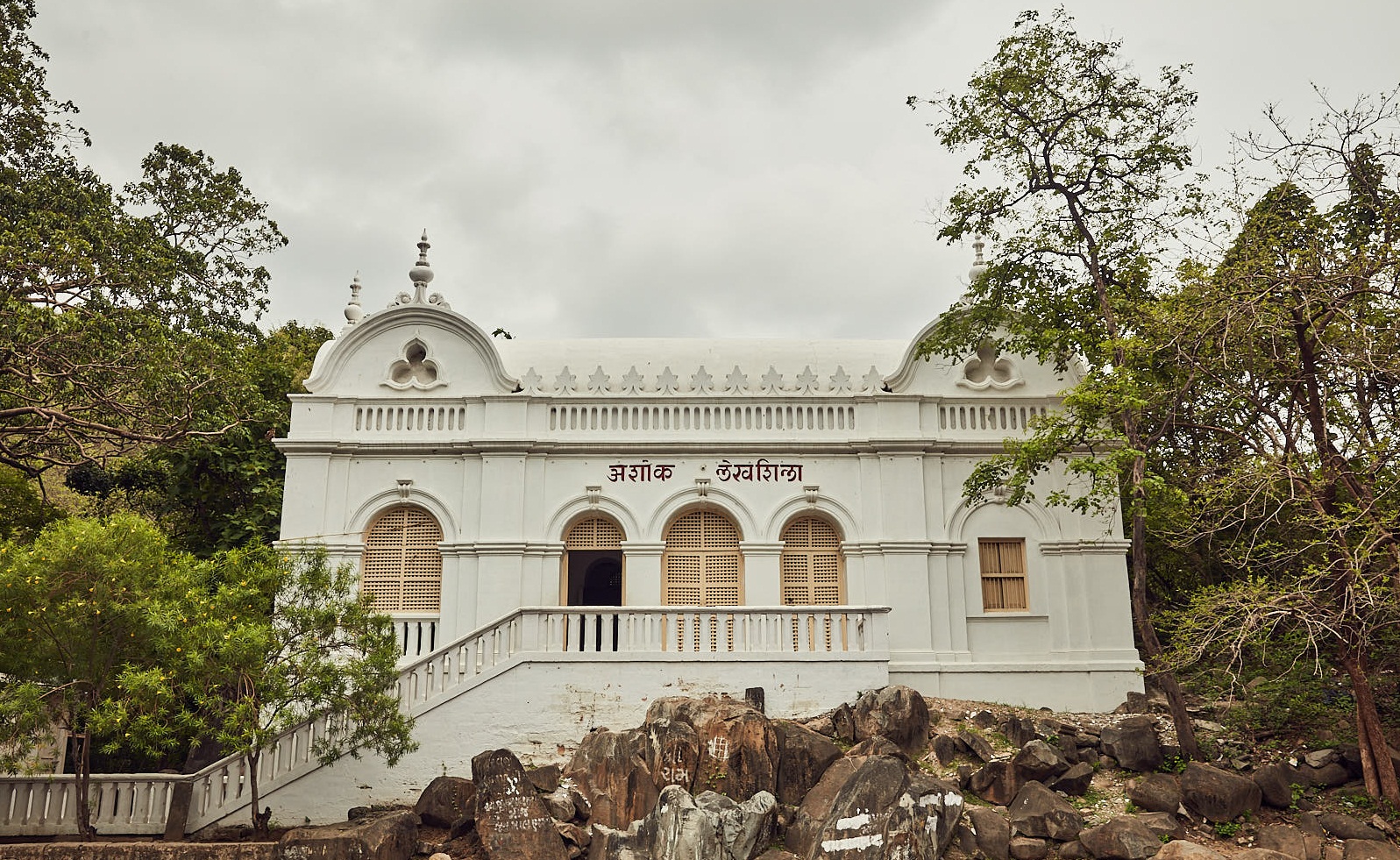Girnar Rock Edicts : India’s Western Most Peace Imprints
‘For his salvation, man is dependent upon himself. Within himself he has the power to proceed on the road to Nirvana—Ashoka the Great’

Post by Colonel Satish Singh Lalotra
India, the unique geographical entity sitting at the cross roads of great human civilisations like Indus and Chinese has been witness to some tectonic events in its historical past which even to this day has the quality of stumping its citizens leave alone the foreign visitors who land on its shores with the preconceived notions of a country abounding with snake charmers and elephants. One such event of catastrophic proportions that occurred with incalculable loss to human lives anywhere in the world was timed about 2250 years ago in the year 261 BC –the all destructive war of Kalinga. This was one of the most destructive and insufferable war of the world as known by that time period which changed the entire course of this sub-continent as well as had a profound effect on countries as far as Afghanistan, Nepal, Bhutan, and Myanmar. The war fought between ‘Ashoka the great’ of Mauryan empire and the independent state of Kalinga had political and geo-strategic concerns at the bottom of the whole engagement of arms with the Mauryan empire eventually winning it at a colossal loss of more than one lakh dead and twice made as prisoners of war of the opposing army.
No wars in the annals of human history have changed the heart of the victor (Ashoka) from one of wanton cruelty to that of exemplary piety as this war of Kalinga. The war saw so much of bloodshed and wanton destruction of humanity that the victor i.e. Ashoka felt defeated even in victory. The death& destruction at Kalinga steered emperor Ashoka to the path of ‘Ahimsa’ (Non-violence) and to ‘Dharam Vijay ‘prompting him to spread the message of universal brotherhood, peace and equality by way of sending his emissaries all over to neighboring countries like Afghanistan, Nepal, Bhutan, Myanmar, Sri Lanka & Pakistan etc. The messages these emissaries carried with themselves have been carved in various ‘Rock edicts as well as Pillar edicts’ in ‘Brahmiscript and ‘Prakrit language proclaims the beliefs and principles of Buddhism to World. I had the occasion and unique opportunity of visiting one of the sites of these rock edicts in the western most part of India with family at a place called as ‘Girnar hills’ in district ‘Junagarh’ of Gujarat in the year 2002 while posted at Dharangadhra which is about 250 kms from the site as such. Taking NH-147 from Dharangdhra and coming to Surendernagar one has to wheel on to NH-47 which is an auxiliary NH and cross various places like Chotila—Rajkot—Gondal—Virpur—Jetpurfinally hitting Junagarh. I had in fact planned my travel itinerary in such a way that it combined visiting places like Gir forest, Girnar rock edicts, Somnath temple and Diu islands in one go since all these places fell on the same route with minor diversions for their accessibility.
Junagarh under which this massive rock edict comes was the capital of Gujarat in the 2nd and 4th centuries under the ‘Kshatrapa’ rulers. Girnar hills have many sacred spaces of both Jains and the Buddhists. There are in fact many Buddhist caves in the Junagarh fort as well as the town. In addition there are many Jain temples from the 12th to 15th century built on a ridge at Mount Girnar. As one reaches via these rocks one notices that the main rock edict bearing imprint of ‘Ashoka’s purported edicts was near the path leading up to Mount Girnar. The protective building around the edicts was built in 1900 by Nawab Rasool Khan of Junagarh and repaired and restored in 1939 and 1941 by Nawab sir Mahabat Rasool khan in a later time frame.
All these have been housed in a lovely building. As soon as one enters this building one sees the rock looking like a sleepy elephant measuring 10 meters in height and 7 meters in circumference. A wooden stair case leads the visitor to the top of the rock. The earliest inscriptions on the rock are from 3rd century BC (257BC) withan edict of the Mauryan emperor Ashoka too. One can simply imagine the change of heart of the emperor after the Kalinga war after reading these inscriptions. After the Kalinga war emperor Ashoka made 14 major inscriptions in Girnar with minor differences to those found in other places of India. In one of the largest rock edicts at Girnar following has been inscribed—quote ‘ On each occasion one should honour another man’s sect ,for by doing so one increases the influence of one’s own sect and benefits that of the other man; while by doing otherwise one diminishes the influence of one’s own sect and harm’s the other man’s.
Again whosoever honours his own sect or disparages that of another, wholly out of devotion to his own, with a view showing it in a favourable light, harms his own sect even more seriously. Therefore, concord is to be commanded, so that men may hear one another’s principles and obey them’-unquote. It was the world famous historian Col James Todd who stumbled upon an important piece of Indian history on the foot hills of Mount Girnar. He described it as a huge hemispherical mass of dark granite ,which like a wart upon the body has protruded through the crust of mother earth ,without fissure or inequality ,and which by the aid of ‘Iron pen’ has been converted into a book. Col James Todd had the writing on the edicts copied faithfully and sent to the great scholar James Princep in 1837. Princep decoded the Brahmi script in which they were written with an iron implement /pen. He also discovered and established that the Orissa rock edict and the Girnar rock edict were basically identical and helped establish Ashoka as a genuine historical figure.
There are 14 major Ashokan inscriptions in Girnar with minor differences similar to those found in other places in India. Junagarh as mentioned earlier was ruled by the Kshatrapa kings with records kept in Sanskrit in AD 150 by Rudramanin and Skandguptain in AD 450, both of these are mentioned on the lower part of the rock. Though off late the ASI(Archaeological survey of India) has become more strict with their rules governing the usage of cameras inside the building housing these rock edicts way back in 2002 I was able to still capture some precious photos of these rock edicts with family in the foreground. Some of these records pertain to repairing of irrigation systems damaged in severe storms as well as mentioning of Sudarshanlake and a dam built by Chandragupta Maurya.
A first time visitor has lots of tourist interests packed in his plate that includes the famous ‘Dattareya temple on top of Mt Girnar accessible by climbing 10,000 (Ten thousand steps). The rock edicts of this great Mauryan emperor shows the level of sagacity which he displayed thousands of years back chastened by the bloodshed of his doing and keeping human values at the highest pedestal of his vey being. Since this place was my first stop en-route to my wide circuit of coastal Gujarat area I just about spent time till lunch time and sped away to Gir forest my next stop where I had planned to have a night halt. All in all the circuit packs a delightful of vistas to be explored by an avid traveller.
(The writer is a regular scribe and a retired army officer. He can be approached on his email: slalotra47292gmail.com)



